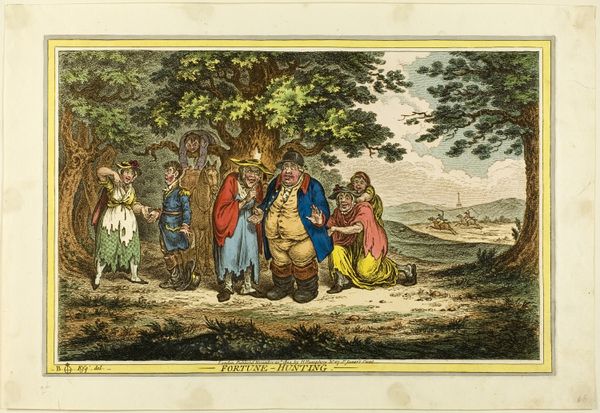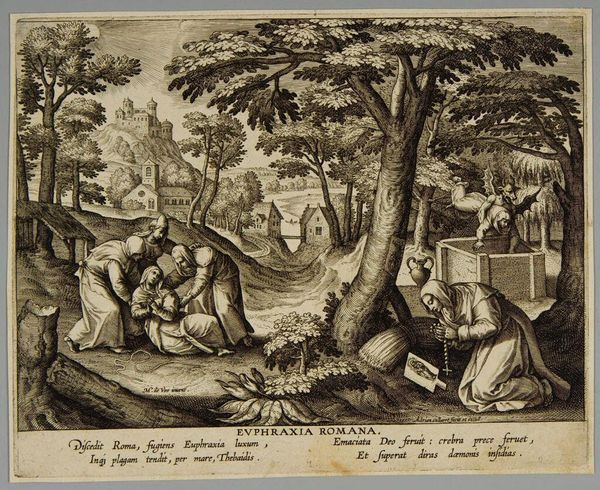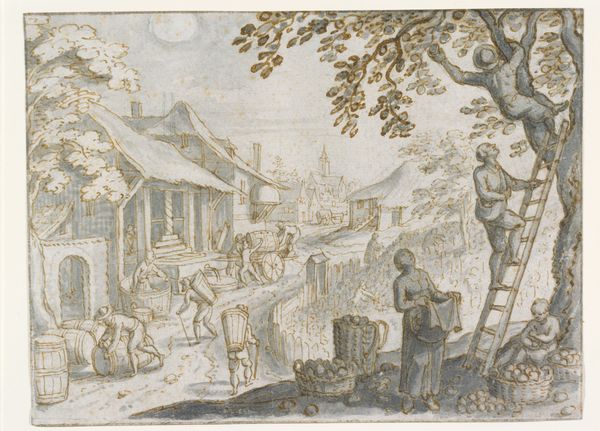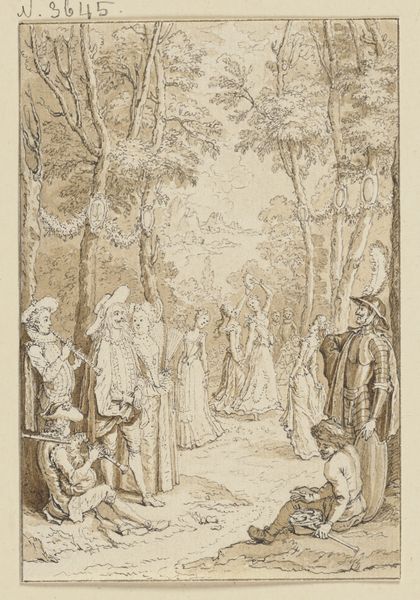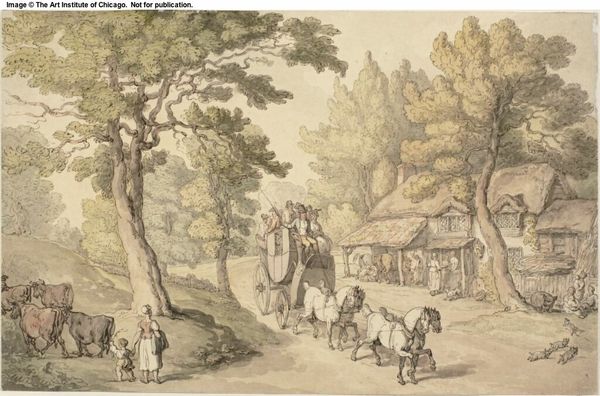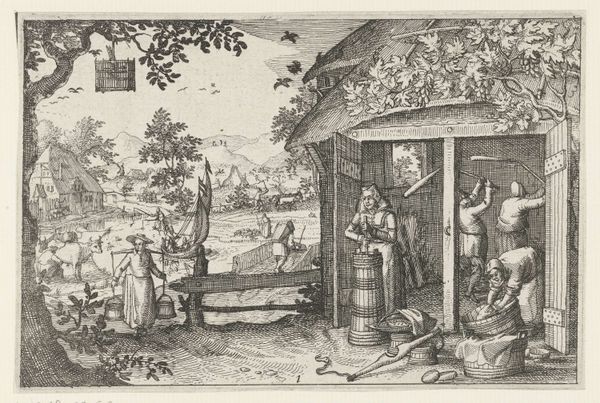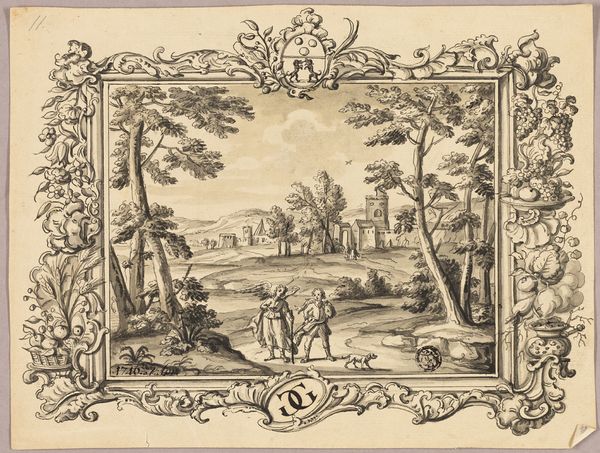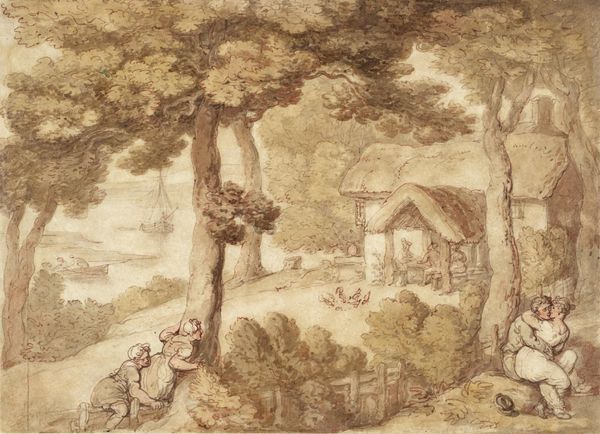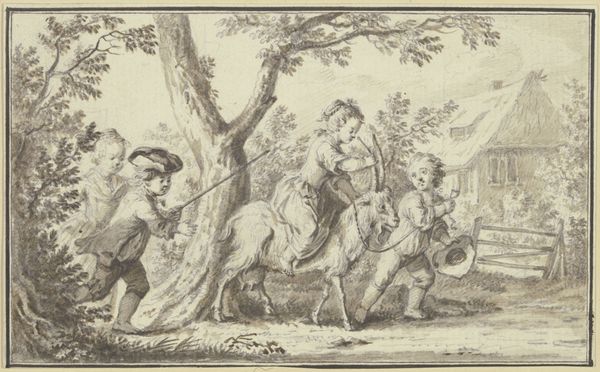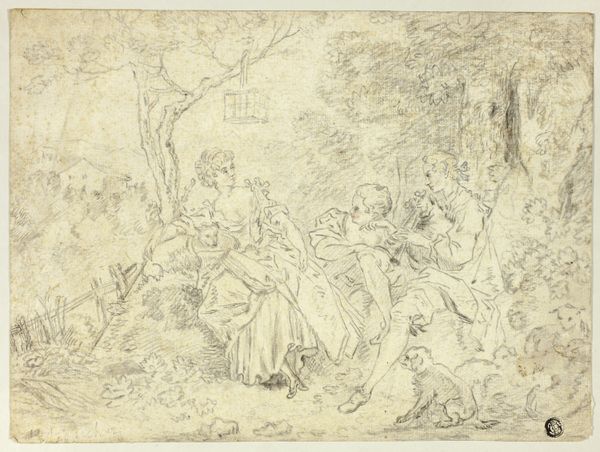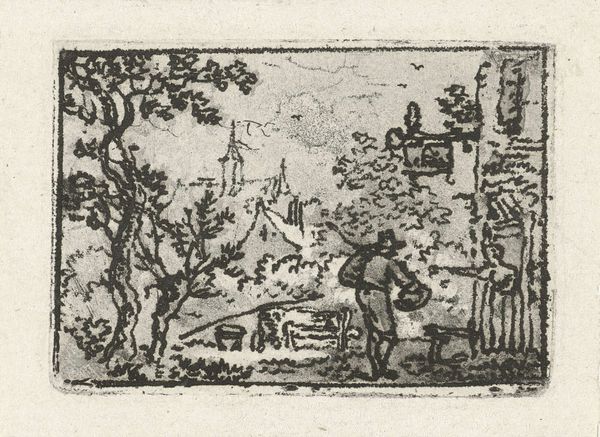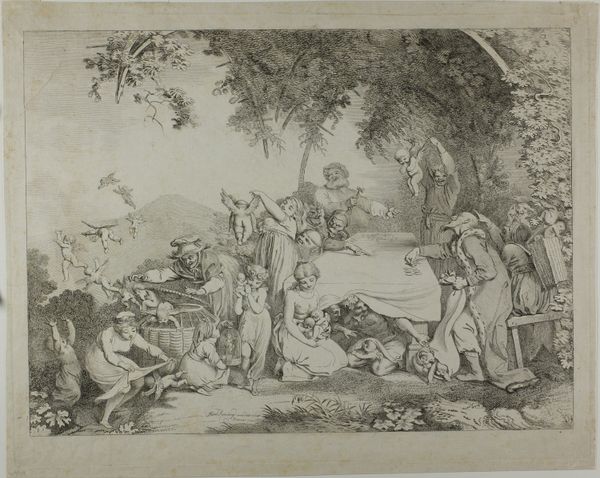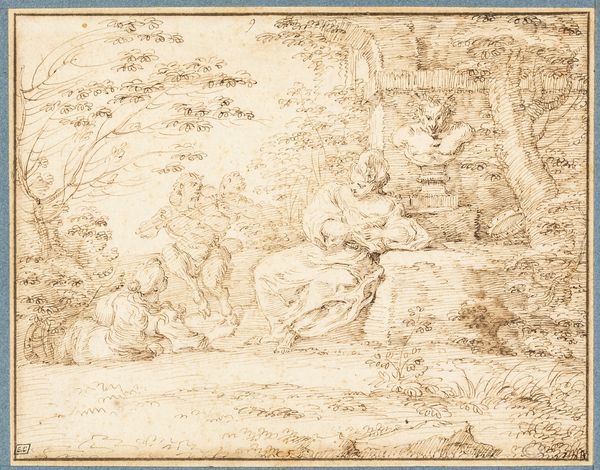
Dimensions: height 38.3 cm, width 49 cm
Copyright: Rijks Museum: Open Domain
These two plaques, currently in the Rijksmuseum, depict European fêtes champêtres and were made by an anonymous artist. The fêtes champêtres, or pastoral festivals, reflect a yearning for an idealized rural life, a common theme in European art, especially during periods of urbanization and social change. These scenes, popular in 18th-century France and then exported around Europe, often portray aristocrats and upper-class individuals enjoying leisurely activities in the countryside, far removed from the realities of agricultural labor or the hardships of peasant life. The visual codes in the plaques, such as the elegant clothing and leisurely interactions, signal wealth and privilege. The presence of a cottage and what appears to be a garden hint at country life, but it's a carefully curated version, far from the everyday life of the lower classes. Understanding these plaques involves researching the art market of the 18th century and the social functions that art fulfilled for its patrons. To fully understand the work, we need to analyze it within its specific social and institutional context.
Comments
rijksmuseum almost 2 years ago
⋮
The scenes on these two plaques are based on work by the French artist Jean Baptiste Pater. Western depictions remained popular among the European residents of Canton until late in the 18th century.
Join the conversation
Join millions of artists and users on Artera today and experience the ultimate creative platform.
